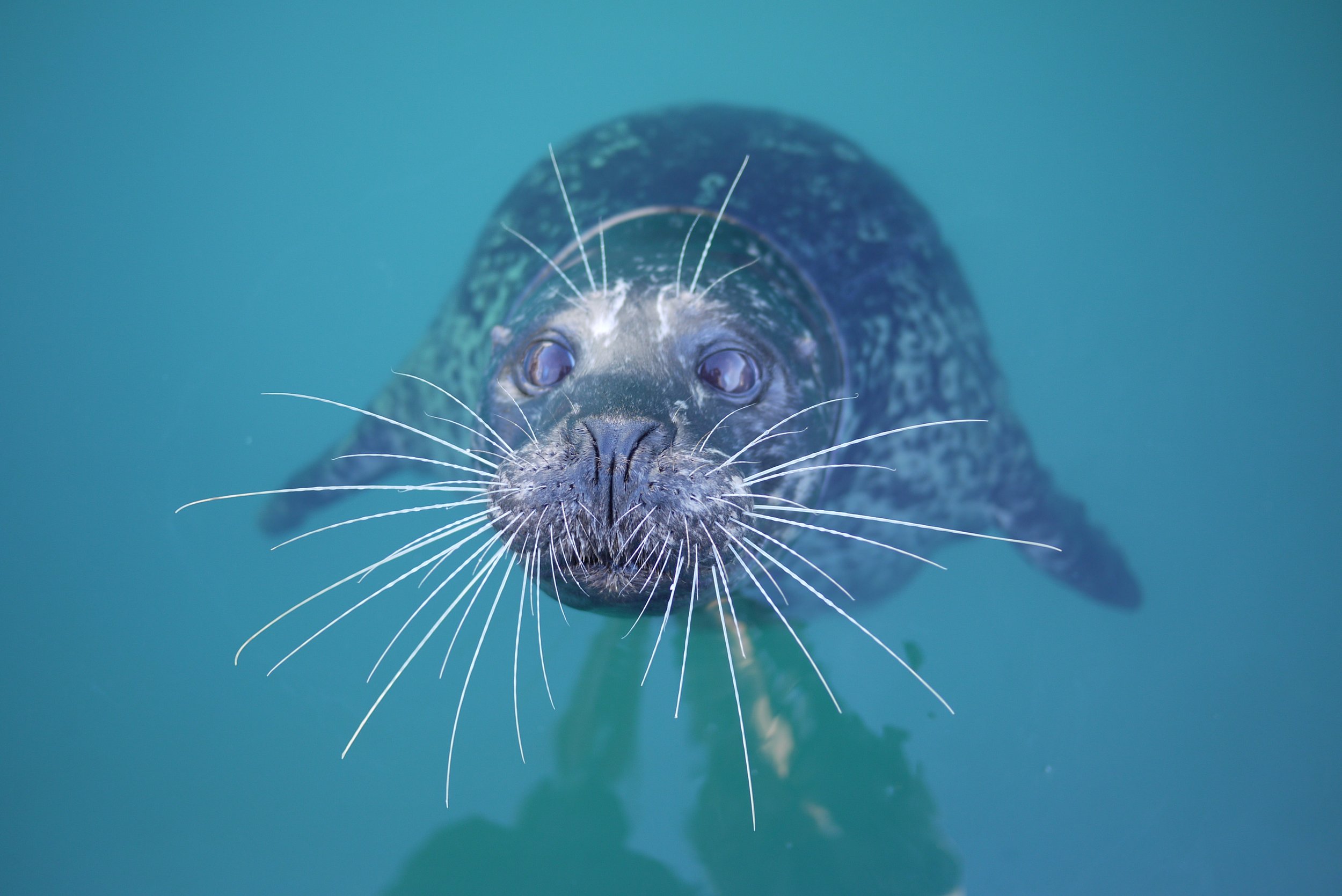
Get Bio-Inspired!
People have always looked to animals to see what we can learn from them. Seals have inspired technologies we have used in the past, use today, and that we hope to use in the future.
Photo: Christin Murphy/NMFS Permit #14535
We’ve been studying and learning from seals for millennia, and they’ve inspired not only stories, but also tools and strategies for thriving in the sea and on land. Here are a few examples.
TOP LEFT: a sealskin float, or buoy, s a convenient way to hold afloat anything heavy in the water. Flexible and durable, it can be deflated for storage and then filled with air when needed or filled with water or oil for transport. Smaller floats can be made from the stomachs of seals. TOP MIDDLE: new wetsuit technology is inspired by the short hairs of a seal’s coat. TOP RIGHT: long before gore-tex, northern seagoing people knew how to keep dry. The thin, flexible skin of a seal’s intestines can be carefully sewn into a light, waterproof jacket perfect for kayaking. BOTTOM: sealskin ski strips have long been used for traveling up steep slopes on skis, a practice thought to have originated with Sami people. Once the skier climbs to the top of the hill, the “skins” (now synthetic) are removed and the skier glides down.
What have you learned from seals? What would you like to invent that is seal-inspired?
Photo Credits: sealskin float, Smithsonian Institution, 1867, Puget Sound, WA; wetsuit, Chris Hunkeler; seal gut parka, Imarnin (summer dried seal gut parka) or oasperrluk (over-garment), Aleutian Islands, Yupik, 20th century, seal gut, dentalium shells, yarn, beads, caribou beard fiber, sealskin, red ochre, hand-stiched, Honolulu Museum of Art, accession 2014-25-01; seal ski skins, US Holocaust Memorial Museum collection, estate of Adelaide Kauffmann; skier, Christine Byl.
Can seal whiskers help us “feel” better?
Even in the dark, seals can "see" the size, speed, and direction of a swimming fish. When a fish swims by, a seal can feel, through its whiskers, the vibrations in the water from 40 meters away, or more.
Seal whiskers (or vibrissae) are highly sensitive. In fact, they are ten times more sensitive than that of a cat.
Researchers are studying seal whiskers to see if they can create similar technology for ships and underwater vehicles to better sense their environment.
The ability of pinnipeds to see and hear above and below the water is quite unique and amazing, too. Who knows what those senses will teach us!
References/ Dive Deeper:
Learn about seal floats from the Alutiiq Museum
“Future diving suits may be furry, thanks to the latest MIT research” Katie Medlock, 2016
“Sugpiaq elder leads Cordova artists to make bear gut parka” Cordova Times, Jane Spencer, June 2022
“Climbing skins 101” by Nathan Boyer-Rechlin, February 22, 2022.
“Seal Whiskers Inspire Marine Technology,” Heather Beem, January 27, 2016
“Phocid Sensory Systems and Cognition”, Hanke, F.D., Reichmuth, C. (2022). Phocid Sensory Systems and Cognition. In: Costa, D.P., McHuron, E.A. (eds) Ethology and Behavioral Ecology of Phocids . Ethology and Behavioral Ecology of Marine Mammals. Springer, Cham. https://doi.org/10.1007/978-3-030-88923-4_2



